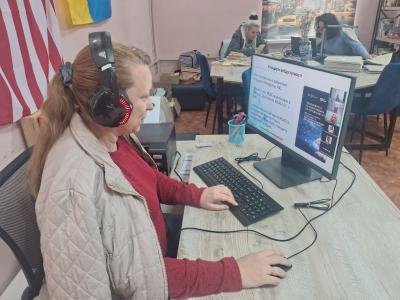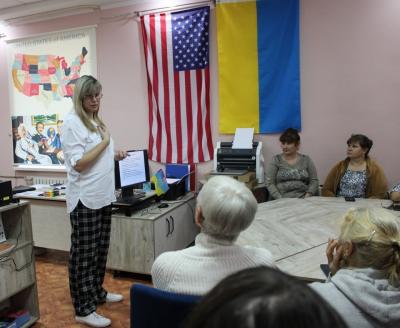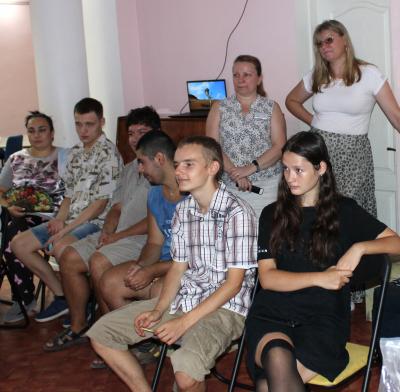Elizabeth Kubler-Ross
Elisabeth Kübler-Ross
Pioneer in the care of the dying
(1926-2004)
When Elisabeth Kübler-Ross was a young girl growing up in a rural village in Switzerland, she had her first encoun¬ters with the fact that people die. One of the most mem-orable occurred when a friend of her father fell out of a tree. He did not die immediately, but he was fatally injured. He called all the neighbor¬hood children to his bedside to say goodbye. He was not afraid. He asked the children to help his wife and children run the farm. “My last visit with him filled me with great pride and joy”, she recalled. His atti¬tude helped young Elisabeth view death as a normal, natural occur¬rence. When she grew up, she became a psychiatrist. She devoted much of her career to teaching compassion for those who are dying and for their friends and families. She also made major discoveries about the emotional stages through which terminally ill people pass.
Elisabeth Kübler was born on July 8, 1926, near Zurich, Switzerland. Soon after she was born, she almost died. Elisabeth was one of a set of triplets and weighed only about two pounds (1 kilogram). Elisabeth was later told how her mother insisted on taking little Elisabeth home with her, rather than leave her tiny baby in the impersonal setting of a hos¬pital.
When Elisabeth was in second grade, she again was faced with a death; this time, that of a young village girl who died of meningitis. The whole village mourned. “There was a feeling of solidarity, of common tragedy shared by a whole community”, she later wrote in one of her books. “The girl was never removed from ... her home. There was no impersonal hospital where she had to die in a strange environment. Everybody close to her was near her day and night”.
Dr. Kübler-Ross contrasted this with her own experience in the hos¬pital. When she was five years old, she was hospitalized with pneumo¬nia. She was kept in isolation for weeks. When her parents came to visit, they were separated from her by a glass wall. “There was no familiar voice, touch, odor, not even a familiar toy”, she recalled.
When Elisabeth Kübler became a teenager, World War II broke out in Europe. Switzerland remained neutral during the war and, as a result, thousands of refugees from Nazi Germany sought safety there. To help with the sick and injured refugees, Elisabeth worked as a volunteer at Zurich's largest hospital. After the war ended, she hitchhiked through European countries that had been ravaged by the war, even visiting a for¬mer Nazi concentration camp. She helped in any way she could. When she reached Poland, she helped two women doctors staff a small, poorly equipped clinic. That is when she decided that she would be a doctor.
She returned to Switzerland, enrolled at the University of Zurich, and earned her M.D. degree in 1957. While in school, she met an American medical student, Emanuel R. Ross, whom she married in 1958. They moved to the United States, and she became a citizen in 1961.
Dr. Kübler-Ross decided to specialize in psychiatry. After complet¬ing her medical and psychiatric training at hospitals in New York City and at the University of Colorado Medical School in Denver, she accept¬ed a post in 1965 as assistant professor of psychiatry at the University of Chicago. Soon, she would be involved in the work that would make her famous.
It all began with a request by a group of students from the Chicago Theological Seminary, who asked her to help them do a study on death. Dr. Kübler-Ross suggested conversations with people who were dying. She and a hospital chaplain interviewed the patients while the students watched and listened behind a one-way glass window. Dr. Kübler-Ross found that the dying people were very willing to share their thoughts and feelings.
While talking with and counseling the patients, she identified five stages that terminally ill people pass through: denial, or the “not me” stage; anger, or the “why me” stage; bargaining, or the “why now” stage of trying to put off the inevitable; depression, in which the person grieves for himself or herself; and acceptance, the stage in which the dying person is ready to let go. Kübler-Ross wrote her conclusions in a now-famous book, “On Death and Dying”, published in 1969.
She then went on lecture tours, urging that courses be set up in schools and hospitals to teach people how to deal with death. She became especially concerned with the art of helping dying children. She recommended that parents let children deal with death early in life through such experiences as the death of a pet. She also became a pow¬erful advocate of hospices, institutions that help terminally ill patients die with peace and dignity.
Kübler-Ross also worked in areas other than those dealing with death. She was acting and associate chief of the psychiatric inpatient service at the University of Chicago's Billings Hospital from 1965 to 1967. In the late 1960s and early 1970s, she served as a consultant to La Rabida Children's Hospital and the Chicago Lighthouse for the Blind.
A more controversial part of her research began in 1968, when she started to study the question of life after death. She interviewed people who had near-death experiences and, in 1975, made a public statement of her conclusion that there is life after death. She tried to prove scien¬tifically that this is so, but her critics say she has failed to do so. Since then, Dr. Kübler-Ross has written several more books, given many lec¬tures and workshops, and founded the Shanti Nilaya (Home of Peace) Growth and Health Center for teaching and therapy in Escondido, California.
For her tireless efforts on behalf of the dying, Dr. Kübler-Ross has received many awards and honors, including honorary doctorates from Smith College, the Medical College of Pennsylvania, Notre Dame, Loyola University, and many others.
More detailed information can be found in the "Extraordinary Women of Medicine" Darlene R.Stille, and issued by The Children's Press in the USA.
Information should be used just for educational purposes.











Comments